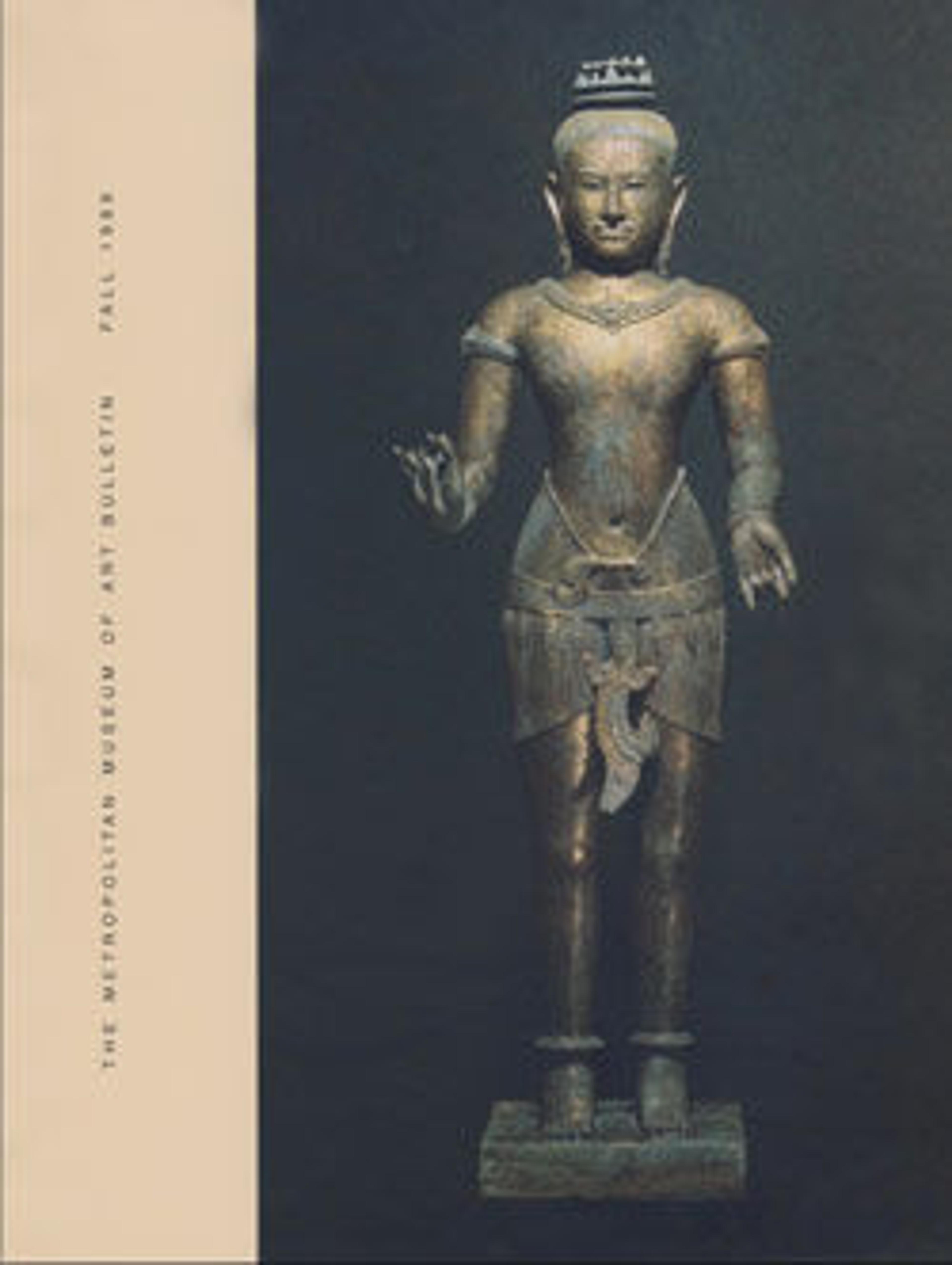Dressing jacket
A combing jacket would have been worn by a fashionable lady at her toilette. Although there are no obvious means of fastening the jacket, pinholes at the neck suggest it was held closed by a brooch. The considerable width at the hem seems to confirm a date of the 1740s, when wide skirts were supported by side panniers. Although there are illustrations of women wearing informal jackets and some extant examples, these are usually more fitted, either at the sleeve or the back. The construction of the combing jacket, however, is closer to the kimono style cut seen in men's dressing gowns of the same period.
The Costume Institute already has a number of white-work pieces, including a very fine cord-quilted linen bodice and two similar skirts, but to find a combing jacket is unusual. The cord quilting of the body and sleeves requires a high degree of skill. Moreover, the white-work embroidery on the facings, hem, and turned-back cuffs is of special significance. Hand-embroidered in linen thread, it comprises a wide variety of stitches and techniques, including drawn-and-pulled work, eyelet holes, and satin, coral, buttonhole, and cretan-feather stitches. This type of embroidery is to be found particularly on men's linen vests of the 1740s, which were probably worn in the summer and sometimes for wedding or engagement celebrations. Although quilted, this combing jacket is not padded and would have been a suitable garment for summer.
The Costume Institute already has a number of white-work pieces, including a very fine cord-quilted linen bodice and two similar skirts, but to find a combing jacket is unusual. The cord quilting of the body and sleeves requires a high degree of skill. Moreover, the white-work embroidery on the facings, hem, and turned-back cuffs is of special significance. Hand-embroidered in linen thread, it comprises a wide variety of stitches and techniques, including drawn-and-pulled work, eyelet holes, and satin, coral, buttonhole, and cretan-feather stitches. This type of embroidery is to be found particularly on men's linen vests of the 1740s, which were probably worn in the summer and sometimes for wedding or engagement celebrations. Although quilted, this combing jacket is not padded and would have been a suitable garment for summer.
Artwork Details
- Title:Dressing jacket
- Date:1725–50
- Culture:British
- Medium:linen
- Credit Line:Isabel Shults Fund, 1988
- Object Number:1988.197
- Curatorial Department: The Costume Institute
More Artwork
Research Resources
The Met provides unparalleled resources for research and welcomes an international community of students and scholars. The Met's Open Access API is where creators and researchers can connect to the The Met collection. Open Access data and public domain images are available for unrestricted commercial and noncommercial use without permission or fee.
To request images under copyright and other restrictions, please use this Image Request form.
Feedback
We continue to research and examine historical and cultural context for objects in The Met collection. If you have comments or questions about this object record, please contact us using the form below. The Museum looks forward to receiving your comments.
